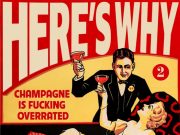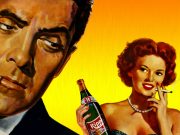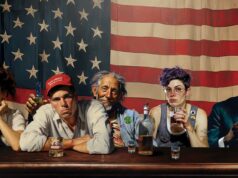MADD (Mothers Against Drunk Driving) has had one hell of a run.
Their success story is the envy of the activist community: their lobbying for tougher laws and public awareness is largely responsible (or so they will tell you) for reducing alcohol-related traffic deaths since 1982 by a whopping 37 percent. Okay, they give a little credit to the maturation of baby boomers, safer vehicles, airbags and mandatory seatbelt laws.
They have captured every flag they initially set out to capture. They got prison sentences for repeat DUI offenders. Flying in the face of the Constitution, they pressured the government into establishing sobriety checkpoints where you could be stopped by law enforcement officials with no probable cause whatsoever. They got the prosecutable definition of a DUI lowered to a BAC (blood alcohol content) of .12, then .1, and now, through a federal program that blackmails states by withholding highway funds, they have driven it down to .08. They fought hard and they won again and again.
So, are they ready to declare victory and pack it up, patting themselves on the back for a job well done?
Uh, no. The thing about large and powerful organizations (much like those “transitional” military juntas that end up hanging around for decades), once they get comfortable with the wealth and power, they are very reluctant to fade away. It’s a natural instinct, among beasts and businesses alike, to try to survive as long as possible and, like a shark, MADD instinctively understands that once they stop moving forward, they will surely die.
So where are they moving now? I’ll tell you in a minute. First, let’s backtrack twenty years.
Their intentions were good—at least in the beginning. MADD was founded in 1980 by California realtor Candy Lightner. That year, Lightner’s 13-year-old daughter Cari was killed by a drunk driver with four previous arrests for drunk driving, including one only two days earlier. She was angry, and rightfully so.
“Through MADD, I found a way to deal with my anger,” she wrote in her memoirs, “a way to address a serious social problem that had taken my daughter from me.”
Due considerably to Lightner’s aggressive campaigning and public appearances, MADD grew rapidly in its first five years, enjoying many successes, including raising the national drinking age from 18 to 21. By 1985, it had 364 chapters, 600,000 members, and a budget of $12.5 million.
Then something happened. In October of 1985, MADD’s board of directors, largely salaried male executives at that point, fired Candy Lightner. They claimed she was making excessive demands on the budget, she claimed it was a coup d’etat by radical prohibitionists who had infiltrated the organization. Disturbed by the shift from attacking drunk driving to attacking drinking in general, the founder of MADD later joined the liquor lobby, declaring, “I worry that the movement I helped create has lost direction. (The .08 legislation) ignores the real core of the problem. If we really want to save lives, let’s go after the most dangerous drivers on the road.”
Having their creator turn on them (much like Dr. Frankenstein turning on his monster when he realized he’d put in a defective brain) sticks in MADD’s craw to this day, but they’re working to fix it. When she was in power, Lightner was unequivocally hailed as the organization’s founder. Since she went over to the other side, however, MADD has, in a very Orwellian manner, slowly edited her out of existence. Presently MADD says she was just the loudest of a group of Californian women who created the organization.
Lightner’s successor, Norma Phillips, was not so concerned with the defective brain of MADD so much as its body. She rapidly transformed MADD into a massive multilayered bureaucracy, hiring legions of salaried state coordinators to watch over the volunteer-led chapters—and keep the money rolling in. The chapters were required to adopt standard bylaws and pay higher annual dues. Chapters that didn’t follow the rules had their charters revoked and their bank accounts taken over by their state headquarters. This new order was put in place, MADD chairman and CEO Robert L. Beck explained in 1988, because they needed to fix a “middle management problem.”
No longer a decentralized grassroots movement, the new MADD structured itself along the lines of a corporation. To keep the machine’s cogs spinning, they needed lots of grease, and they didn’t care how they got it, even if it meant using “boiler room” style companies to raise money through aggressive telemarketing. The fact that only 28% of the donations they wrung out of the public was actually going to anti-drinking and driving programs didn’t bother them in the least. They shrugged off criticism from watchdog organizations like the National Charities Information Bureau who said “. . . organizations should be spending 60 percent on programs and no more than what’s reasonable on fund-raising,” and the Non Profit Times, who listed MADD as one of the highest spenders on fundraising and the one of the lowest spenders on programs.
By 1998, MADD had an annual budget of $42 million. Pension plans were put in place. Salaries and benefits exceeded $9 million per year. The Frankenstein monster had kicked its creator out of the castle and had mutated into a powerful and ruthless giant, still somehow beloved by the local villagers. No longer led by volunteers, but rather salaried executives, it started approaching its goals in much the same way a corporation does. Where an idealist will go home after winning a war, a mercenary will prolong and seek out conflict, so long as he continues to get paid. But the money would only continue to roll in if the public perceived there was still a need for war, and a huge part of MADD’s budget is dedicated to keeping that perception in place.
MADD’s core statement, the one that gets the most attention, the one that is most repeated by the media, is this: Drunk drivers kill 16,000 Americans a year. It’s an impressive statement. It gives the impression that crazed drunks are swarming the roads, seeking out innocent victims to plow into, laughing maniacally all the while. With so many homicidal maniacs loose, an organization like MADD seems entirely necessary and even noble.
The only problem is that statement is a flat-out lie. And they know it’s a lie.
Let’s examine the statement. First off, they get that statistic from their longtime co-conspirator, the National Highway Traffic Safety Administration, who puts it like this: 16,000 Americans each year are killed in alcohol-related accidents. MADD consciously took the term alcohol-related and twisted it into alcohol-caused.
What does alcohol related mean? It means someone involved in the accident had a measurable (not necessarily illegal) amount of alcohol in their system, or there was evidence of alcohol near the scene (an old beer can under the seat will do). They are not saying the someone with alcohol in their system caused the accident or was even driving or even inside a motor vehicle. But somehow it is always the drinker’s fault. Sober drivers never get into accidents, so it’s gotta be the drinker’s fault, right?Here’s some of the methods they use to arrive at and further inflate the number:
1.) A measurable amount of alcohol means anything above .00 percent, up to and including a sip of beer or cough medicine.
2.) Drivers impaired by drugs, be it aspirin, cough syrup, crack or heroin, are often counted as drunk drivers.
3.) If a pedestrian is involved and has a measurable amount of alcohol it is considered alcohol-related.
4.) If a passenger has alcohol in his system, it is considered alcohol related.
5.) If the accident is a sober driver’s fault (i.e. a sober driver runs a red light and crashes into a driver who had a beer after work) it is alcohol-related.
6.) If the residual presence of alcohol is found (an empty beer can) it is considered alcohol related, even if tests prove no one has any alcohol in their systems.
7.) The NHTSA arbitrarily adds 9% to all the alcohol-related statistics it receives from the states. Why? Because they feel like it.
8.) To further inflate the numbers, The NHTSA just started using what they call the Multiple Imputation Method to inflate alcohol-related statistics even more. The method automatically assumes that anyone involved in an accident who was not tested for BAC (probably because they were obviously sober) could actually have been drunk, and the numbers are jacked up by a set percentage.
>
So, are drunk drivers responsible for 16 thousand deaths a year? No. Why doesn’t MADD tell the truth? Because if the truth got out people would start to wonder what the hell MADD is screaming so hysterically about. Then the money would stop rolling in. And they’re not about to let that happen.
According to the painstaking research of Stephen Beck of Drinkers Against Mad Mothers, only 500 innocent Americans are killed each year by drunk drivers. As many Americans are killed in railway accidents each year.
Of course, one is too many, but is that number suitable justification for the mass hysteria sweeping the nation? Does it justify the one and half million arrests for drinking and driving each year?
“According to the NHTSA website, for every one of those arrests there are from 772 to 2,000 incidents of impaired driving,” says Beck. “Using the low figure of 772 and a low number of arrests, simple math tells us that 1.5 million arrests times 772 incidents equals 1,158,000,000 arrestable, impaired driving incidents per year.
“The billion-plus number of arrestable, impaired driving incidents per year (if they were sugar cubes) would form a line longer than 9,000 miles. The number of fatalities caused by drunken drivers, if also represented by sugar cubes, could be held in your hands.”
How could a billion and half events of what MADD calls “America’s most frequently committed violent crime” happen each year?
Easy. It’s all about definitions and thresholds. Make putting your hands in your pockets a crime and the numbers will be very impressive indeed. With the BACs low and getting lower, it’s very easy to rack up those numbers. An irony Beck brings to light is “each year 3,000 people in jail on drinking and driving charges kill themselves while incarcerated. In other words, the number of suicides each year greatly outnumber the innocent deaths caused by drunken drivers.”
Another of the Mother’s most popular lies is: “At .08 BAC, a driver is 16 times more likely to be involved in a crash’’ than if he had consumed no alcohol at all. Former MADD President Karolyn Nunnallee goes on to say that “many people are dangerously impaired at even .05 BAC.’’ That’s the level most people will have after one beer on an empty stomach.
Where does MADD get those alleged facts? Only they seem to know. Neither is even remotely true. Dr. H. Laurence Ross, a professor at the University of New Mexico and author of Confronting Drunk Driving, says ‘’the potential of alcohol to impair drivers and cause accidents is directly proportionate to the amount consumed.’’ According to Dr. Ross, adoption of the .08 standard has the potential to increase by 60 per cent the number of motorists arrested for “drunk driving’’ — but without any concomitant decrease in either fatality or accident rates.
Accident statistics show that impairment of driving ability seldom takes place until BAC levels exceed .10. A BAC of .08 or less means there is little enough alcohol in his or her system that it is extremely unlikely to appreciably affect coordination, reaction times, vision, or judgment in a normal person. Fewer deaths occur in accidents involving drivers with BACs between .08 and .09 than involving those with BACs between .01 and .03, which is cough-syrup territory.
So does lowering the BAC and putting more people in jail going to make the roads safer? No. The NHTSA tried to twist the figures but the federal government’s in-built watchdog, the GAO (General Accounting Office) took them to task for their lies and they had to backtrack, finally admitting lowering the BAC in such states as North Carolina did not have any noticeable effect on alcohol-related crashes. It did succeed in putting a lot more Americans in jail for having a beer after work, however.
Consider it: a 120-pound woman with an average metabolism will reach the .08 BAC threshold if she drinks two six-ounce glasses of wine over a two-hour period. Two glasses of wine. Two hours. This is the modus operandi of MADD’s “violent criminal.” In the states that have already passed .08 legislation, she will face arrest, fines, mandatory jail, loss of license and insurance rate increases of 200 to 300%.
MADD does confess it’s very difficult to detect a driver who is at .08, as they probably won’t be driving any differently than a sober driver, so they’ve put forth policy statements declaring it will be necessary to put more roadblocks into place to catch these dangerous criminals.
Which is wholly ridiculous. It’s the only legal circumstance I can think of where someone is arrested and imprisoned for presenting the mere possibility of committing a crime. It’s akin to the police randomly stopping and testing lower-income people for hunger. If they are hungry, they’re arrested for shoplifting, because there’s a possibility a poor hungry person will steal a loaf of bread from a nearby supermarket.
Another lie MADD likes to shill is they have no interest whatsoever in de facto prohibition of alcohol. Sift through the Official Position Statements page of their website, however, and you’ll think you’ve accidentally clicked into the Anti-Saloon League’s homepage. They have broadened the scope of their anti-alcohol crusade to include: higher taxes on alcohol, reducing access to alcohol for the community in general, prohibition of drinking while playing golf, banning alcoholic drinks from having fancy or fun labels, the ability to sue bars, liquor stores, breweries and distilleries for damages sustained from one of their customers, a ban of alco-pops, forcing bars to close earlier and uniformly, a ban on happy hours, the curtailing of beer ads on the air and banning them entirely from billboards, and etcetera.
None of which has anything to do with driving, unless you’re talking about golf carts. Making the roads safer is no longer their goal or function. Make no mistake; MADD is now marching toward one thing and one thing only: total prohibition of alcohol. Don’t believe me? Check out these quotes:
“Once you’ve consumed your first drink, you’ve lost that ability to make a sound judgment.”
—Penny Wagner, MADD Chapter President
“Lowering the legal [arrest] standard will be a deterrent for light drinkers as well as heavy drinkers. There is no safe blood alcohol level, and for that reason, responsible drinking and driving means no drinking and driving.”
—Catherine Prescott, former President, MADD
“After drugs and tobacco, I think the next frontier will be–it has to be–alcohol” and “While a lot of attention is paid to the serious problems of repeat offenders, we don’t want to overlook the casual drinker. If you chose to drink, you should never drive. We will not tolerate drinking and driving–period.”
—Karolyn Nunnallee, while President of MADD
“If .08% is good, .05% is better. That’s where we’re headed, it doesn’t mean that we should get there all at once. But ultimately it should be .02%.”
—Steve Simon, Chairman, Minnesota State DUI Task Force
“We may wind up in this country going to zero tolerance, period.”
—U.S. Senator and MADD lackey Barbara Boxer (D-CA)
MADD has never had a problem with the truth. Why would they when they’re able to ignore and twist it at will with no one willing to call them on it? At some point they decided the truth was no longer important, they believe their cause so grand, so righteous, so profitable, the facts can be distorted as much as they like. If the public is deceived, well it’s for their own damn ignorant good. They’ve adopted the Marxist maxim that the end always justifies the means.
Imagine a vigilante group created in the Old West to hunt down and hang horse thieves. We’ll call it the Cowboys Against Horse Thieves. The group was widely supported and grew very large and rich, but then something terrible happened: they started running out of horse thieves to hang. So they decided they would change what the public perceived to be a horse thief. Someone who stole a bicycle, they declared, was actually a horse thief. Someone who looked at someone else’s horse funny was actually a thief and should be strung up. Hell, anyone who rode a horse was probably in some way a horse thief. And as long as all these evil horse thieves are running around, the CAHT has stay in business, protecting the public.
How are they getting away with this sinister nonsense? They’re powerful. They’re a sacred cow with an aura of untouchability. What politician is going to call what the public perceives to be a well-meaning group of tragedy-stricken widows a gang of frauds and liars? That’s why the president of MADD is always selected from members who’ve had a loved one killed by a drunk driver. The perception of MADD as an organization of victims must be maintained.
Will MADD ever go away, even if they succeed in bringing on a dark new era of prohibition? Not if they can help it. The only thing we can hope for is, as their position becomes more and more radical, they will finally be revealed as not a well-meaning group of social advocates, but a fraudulent gang of liberty-squashing fascists.
When that happens we’ll have a victory drink. Providing, of course, we know a reliable bootlegger.
You can get the straight facts from the DAMM website at: damm-madd.com










